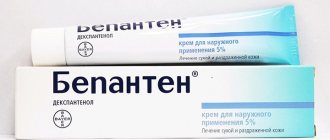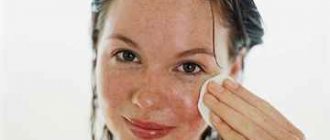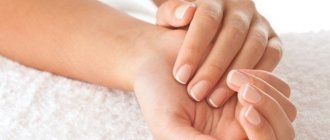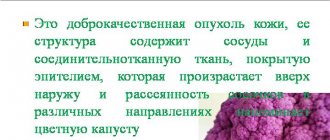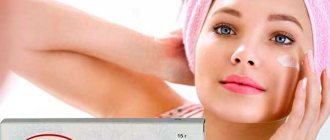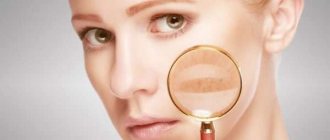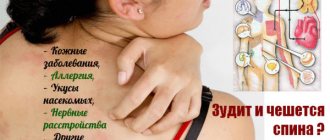Red spots on the skin are one of the most common symptoms that patients complain to a dermatologist or allergist. Moreover, the cause of their appearance can be more than 50 pathologies that require mandatory treatment.
It is especially important to consult your doctor if the spots begin to increase in size, itch, and spread throughout the body. Most often, such symptoms are caused by allergies, which manifest themselves due to exposure to an external irritant. Treatment of such a pathology should be carried out under the supervision of the attending physician after installation of the allergen.
Skin allergies: red spots itchy, treatment
Causes of red allergic spots on the skin
Among the main causes of pathology that manifests itself as an allergic reaction in the form of spots with itching are the following:
- direct or indirect contact with detergents and cleaning products, or rather their chemical components that can irritate the skin;
- cold allergy, which in some cases manifests itself as swollen red itchy spots;
- use of cosmetics and care products, including creams and lotions;
- frequent or accidental contact with chemicals, while they may not be aggressive, but will be irritating for a particular patient;
- use of medications, including oral medications;
- passion for solarium and other cosmetic procedures, including masks and scrubs;
- a reaction to water, most often sewage, if the amount of certain chemical elements in it is exceeded.
Allergens
Attention! The exact cause of the pathological reaction can be determined by an allergist by taking a blood test and conducting allergy tests. In this case, a situation may arise in which several sources will be an irritating factor at once.
Types of allergies
The appearance and characteristics of skin rashes depend on the type of allergic dermatosis. The rash can appear either on a separate area of the body, for example, an allergy on the legs, or be localized throughout the body.
That is why in medicine there are several main types of allergic reactions:
- Atopic dermatitis.
- Contact dermatitis.
- Hives.
- Eczema.
- Toxidermy.
- Neurodermatitis.
- Quincke's edema.
- Lyell's syndrome.
- Steven-Johnson syndrome.
The appearance and characteristics of skin rashes depend on the type of allergic dermatosis. The rash can appear either on a separate area of the body or be localized throughout the body.
Atopic dermatitis. Contact dermatitis. Hives. Eczema. Toxidermy. Neurodermatitis. Quincke's edema. Lyell's syndrome. Steven-Johnson syndrome.
Antihistamine tablets and drops against itchy red spots
Zyrtec
A medicine produced in the form of drops. It belongs to the latest generation of medicines, which allows you to eliminate allergies without side effects. Only some patients may experience discomfort and discomfort during treatment due to individual sensitivity and intolerance. The initial dosage of Zyrtec is 5 mg of the active ingredient, which is equal to 10 drops of the medication. Therapy using the drug continues until all symptoms of the disease disappear and for three more days after that.
Telfast
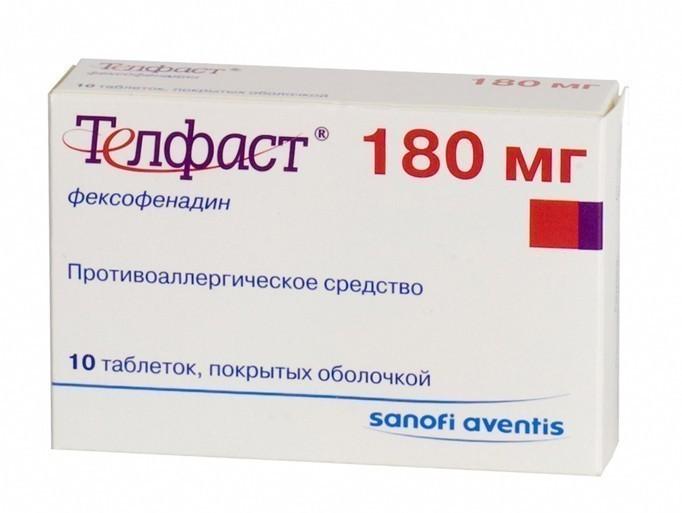
Antiallergic drug Telfast
The medication is available in the form of tablets that should be taken once a day. For allergic dermatoses, patients take 180 mg of the active ingredient. If tolerance is poor, the amount of active substance can be reduced to 120 mg. It is advisable to take Telfast outside of meals to ensure maximum absorption. Therapy continues according to individual indications.
Fexofenadine
Also available in tablet form. Take Fexofenadine without food, washing down the medication with a small amount of clean water. If you have any types of allergic skin rashes with itching and irritation, it is recommended to take 180 mg of the main component. If side effects occur, you can reduce the dosage to a child dose by taking 30 mg of Fexofenadine in the morning and evening, or take an average dose of 120 mg.
Allegra

Allegra for allergies
A new generation medicine, available in the form of tablets for oral use. In the presence of allergic dermatoses, patients are recommended to take 180 mg of the active ingredient. If severe side effects of mild nature occur, you can try reducing the dose to 120 mg of the main substance. Therapy continues until symptoms disappear completely.
Attention! If there are any skin rashes of an allergic nature, the use of tablets is recommended for extensive lesions. If the allergy manifests itself in small areas, you can get by with medicinal ointments.
Contact dermatitis
Contact dermatitis is a type of allergic inflammation of the skin that occurs after skin contact with an external allergen or irritant. If a person has hypersensitivity to an allergen, contact dermatitis develops quickly, however, there are cases when this allergic disease can develop over several weeks.
Symptoms of contact dermatitis:
- Redness of the skin.
- Swelling of the area of skin that came into contact with the irritant.
- Bubble formation.
- Rashes.
- Formation of erosion.
- Itching.
Contact dermatitis can occur when the skin is exposed to the following factors:
- Food.
- Cosmetical tools.
- Chemicals used in everyday life.
- Metals.
- Medicines.
- Clothes made from synthetic fabrics.
Redness of the skin. Swelling of the area of skin that came into contact with the irritant. Bubble formation. Rashes. Formation of erosion. Itching.
Food. Cosmetical tools. Chemicals used in everyday life. Metals. Medicines. Clothes made from synthetic fabrics.
Antiallergic ointments against red spots
Protopik
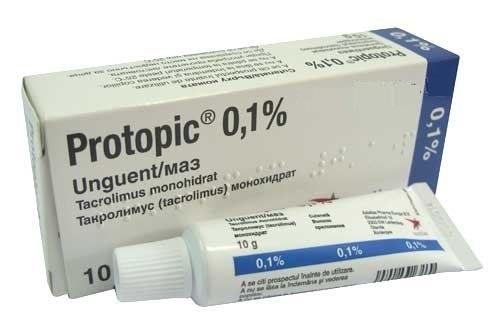
Protopic allows you to eliminate allergic skin rashes of even undetected nature
A unique medicine that allows you to eliminate allergic skin rashes of even an undetected nature. Patients in most cases tolerate the medication well without the appearance of any negative symptoms. To eliminate red spots with itching, apply Protopic in a thin layer to the affected skin. During an exacerbation, the ointment is applied twice, after which the number of daily doses is reduced to one. The duration of treatment is usually 3 weeks. If necessary, the prescribed amount of active substance is adjusted.
Skin Cap
The latest generation drug, which includes zinc. Use the drug 1-2 times a day, taking into account the severity of the disease. At the same time, you should not apply Skin-Cap to the mucous membranes; highly specialized preparations are used for this. Non-hormonal ointment is not used for compresses and bandages. Therapy continues according to individual indications, usually lasting two weeks.
Zinc ointment
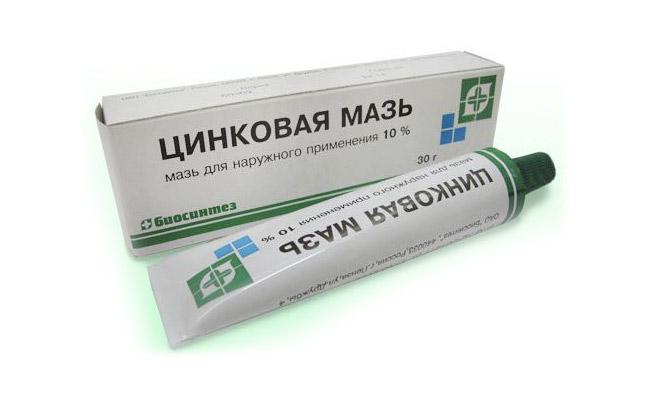
Zinc ointment is the most affordable way to get rid of allergies in the form of red spots
The most affordable way to get rid of allergies in the form of red spots that constantly itch. But it is worth understanding that Zinc ointment only eliminates the accompanying symptoms of the disease, which include itching, irritation and swelling. Therefore, the drug should be included in combination therapy with antihistamines. Apply Zinc ointment 1-3 times a day in a thin layer. Treatment according to individual indications can last up to three weeks.
Fenistil
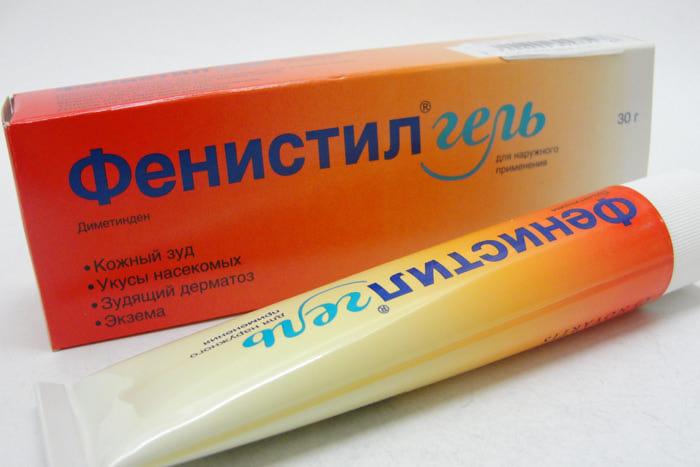
Fenistil is a safe remedy for eliminating any allergic manifestations on the skin
A traditional safe remedy for eliminating any allergic manifestations on the skin, including insect bites. For red spots that itch, you can use Fenistil gel or emulsion. The drug is applied to the affected areas up to four times a day. Therapy continues until symptoms disappear completely. If there is no noticeable improvement from using Fenistil, the medication should be replaced with another.
Attention! Antiallergic ointments should not be applied to healthy areas of the skin. This can cause an allergy to the medication, which will also manifest itself as itching and rashes.
Causes
There are three main reasons why a rash appears:
- Allergic rashes;
- Non-communicable diseases;
- Rashes on the body of an infectious nature.
Skin rashes may vary in shape, color and accompanying symptoms, depending on the nature of their appearance and location on the body.
Hives
If a pink or red rash on the body of an adult itches and spreads, this is a sure sign of polyetiological dermatosis or, in other words, urticaria.
Often such redness is a manifestation of an allergic reaction, but it can also occur due to helminthiasis, endocrine disorders, cancer pathologies, etc. In this case, an itchy rash is not a disease, but a signal of an acute reaction to an allergen or a serious illness.
Hives on the body can also occur during menopause as a consequence of decreased immunity. In this case, you should not self-medicate, but visit a doctor who will prescribe the correct medications.
Scabies
The scabies mite can cause itching both after a few hours of infection and after 10-12 days. If a rash appears on the body, which begins to itch severely in the evening, and scabies appear on the surface of the epidermis, it is most likely scabies.
Blistering formations appear on the skin of the body, filled with liquid and crusts.
Additionally, red dots and spots may appear on the stomach, between the fingers and in the intimate area. During treatment, bedding and clothing should be changed and disinfected frequently to avoid re-infection.
Lichen
This disease of infectious origin takes many forms and has as many symptoms.
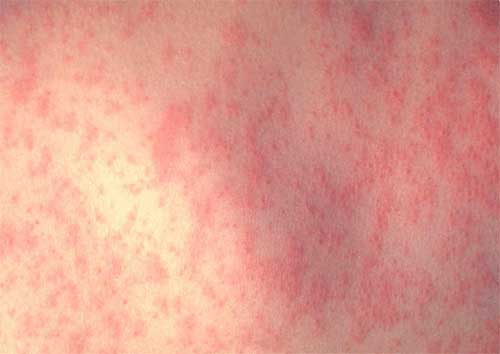
Rash with lichen
Signs of lichen:
- itching;
- peeling;
- inflammation;
- severe pain (with shingles);
- rashes of various colors and sizes;
- the general condition does not worsen.
The disease is transmitted through direct contact with infected people or animals. Most often, lichen appears on a specific area of the body, but sometimes it can spread over its entire surface.
Miliaria in adults
A small rash on the body quite often indicates heat rash. When the temperature changes, sweat containing salt appears on the surface of the skin. It gets into enlarged pores and causes irritation and damage to the skin.
There are several types of prickly heat:
- Deep - flesh-colored bubbles, 1-3 mm on the arms, legs and torso. Appears mainly only in adults during overheating and high humidity.
- Red - small blisters itch and appear on the body in places of friction - folds, groin and areas where clothing rubs.
Allergic reaction to medications and household skin irritants
Often, skin inflammation is a manifestation of an allergy to drugs taken orally or applied to the skin. Its most severe manifestation is Stevens-Johnson syndrome.
In addition to an allergic rash on the body, the syndrome may be accompanied by other manifestations:
- the appearance of blisters on the mucous membranes;
- gas becomes painful and festers;
- difficulty urinating.
This syndrome can occur with the use of antibiotics and antibacterial drugs. If you have such symptoms, you should go to the doctor as soon as possible.
However, this is a rather rare and severe case; most often, allergies to household chemicals and medications manifest themselves in the form of itchy pink or red rashes, peeling, fever, etc.
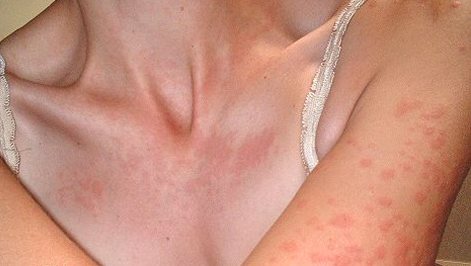
Cancer
Often itching over the body with a rash is mistaken for psoriasis or allergies, but sometimes such symptoms can signal the appearance of oncology.
3 types of rashes that may indicate cancer:
- scaly foci of inflammation in the form of a rash - lymphoma is possible.
- small red dots - leukemia.
- red rashes in adults on the arms (outer side and knuckles) and back (resembles a scarf) - any type of cancer.
If these symptoms do not go away at the same speed as a normal skin disease, and only the affected area only increases, you should pay more attention to them.
Fungal infection
Itching and rashes are often caused by fungal infections.
Some types of fungus:
- spots with clear ring boundaries - mycosis or ringworm;
- blisters and peeling - dermatomycosis;
- small pink, white or brown spots on the back, shoulders and neck - pityriasis versicolor.
Fungus is a contagious infection, so if after contact with a sick person or animal you feel like itchy rashes have appeared, you should consult a dermatologist.
Digestive system disorders
Diseases of the pancreas and stomach are one of the causes of a rash that itches.
- Pancreatitis is additionally accompanied by dull skin tone and aneurysms (red, pinpoint rash all over the body).
- Liver diseases manifest themselves as rashes on the face, neck, body and chest in the form of wen or acne.
- Intestinal dysfunction in 20% of cases is accompanied by a variety of types of rashes, because its contents, due to improper functioning, pollute the blood with toxins, and the body, in turn, tries to get rid of them, including with the help of the skin.
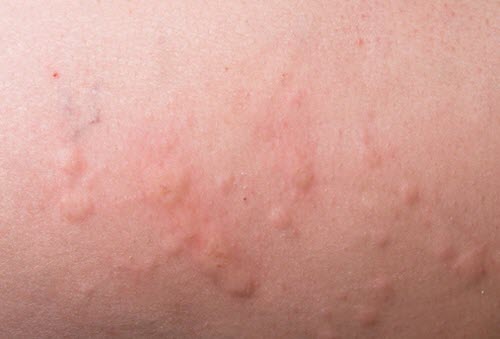
Thyroid disorders
The skin can also signal that the thyroid gland is not working properly. Hypothyroidism (increased activity) is expressed in the form of symmetrical rashes on the folds of the arms, and less often - a rash on the body that does not itch in the form of small waxy nodules.
Autoimmune thyroiditis (chronic inflammation) in combination with diabetes may initially appear as papules and pustules, which then turn into red-brown spots.
Herpes or STDs (sexually transmitted diseases)
The rash may appear with the following STDs:
- Syphilis - the upper layer of the skin is affected by syphilitic roseola (smooth pink spots up to 1 cm) or papular syphilide (pink hemispherical compactions that later turn blue). Most often you can find a mixed type of syphilitic rash.
- Genital herpes - a herpes rash on the body appears in the form of blisters up to 3 mm in size.
- Chlamydia is reddish spots on the body.
- PVI (human papillomavirus infection) is a flesh-colored lump without itching or pain.
- Molluscum contagizontis - rashes (painless nodules 1-3 mm of a flesh-colored or pinkish tint) appear on the face, back, chest and armpits. If you press on the knot, a curdled mass will appear.
- HIV weakens the immune system and opens the door to many diseases that cause rashes .
Folliculitis
With folliculitis, a purulent-inflammatory process develops in the hair follicles. Manifests itself in the form of pustular pustules in areas of hair growth.
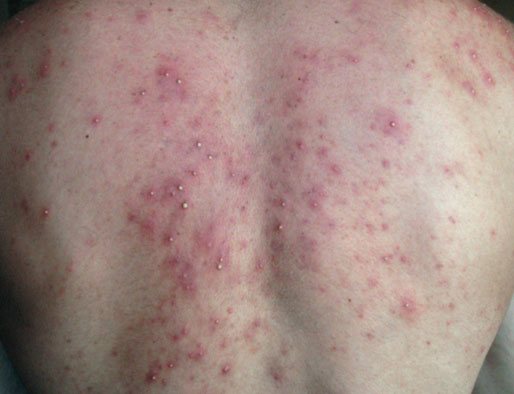
In this case, be sure to urgently make an appointment with a doctor, since in the absence of correct therapy, the inflammation intensifies and it can affect the lymph nodes that are nearby.
Pustules can reach a size of up to 10 mm, and multiple formations are accompanied by severe itching.
Psoriasis
In this case, red, dry, itchy spots appear on the body, which later turn into plaques and are most often located on the buttocks, elbows and knees. However, psoriatic plaques can appear over the entire surface of the body, as well as in the genital area.
Hormonal drugs against red spots
Advantan
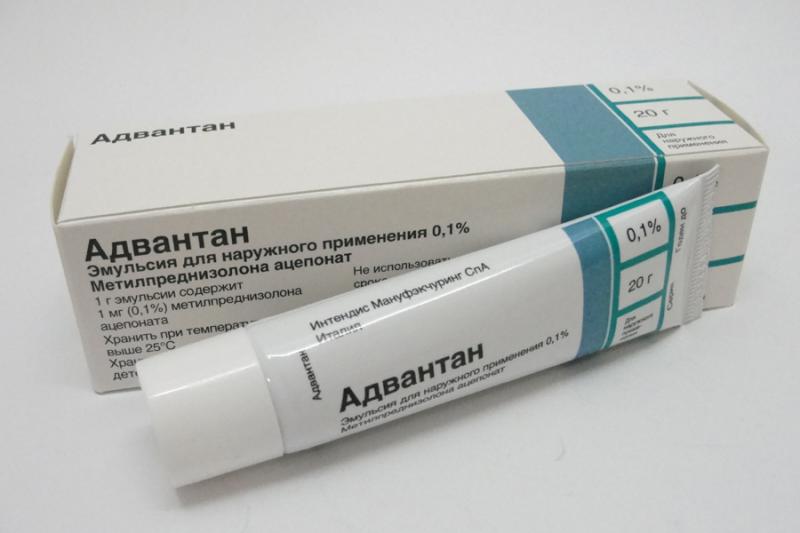
Antiallergic hormonal drug of the latest generation Advantan
Antiallergic hormonal remedy of the latest generation, which is suitable for long-term use. The classic course of therapy lasts three weeks. Advantan is applied in a small layer to the affected areas once a day. It is best to do this on clean skin to ensure maximum permeability. In some cases, the ointment provoked additional swelling and increased itching.
Elokom
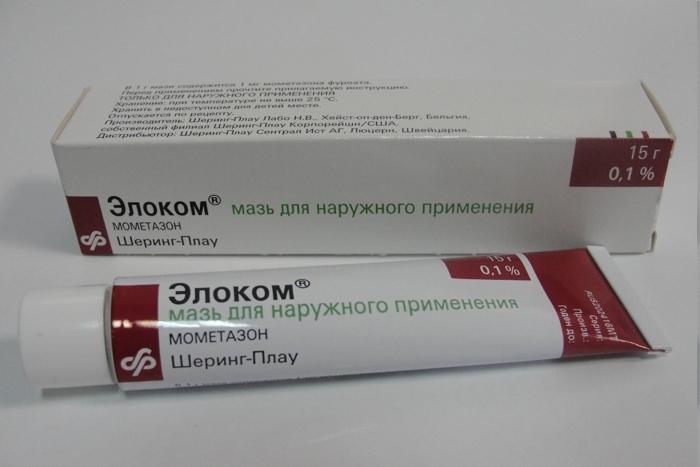
Elokom drug in ointment form
The medication is available in the form of lotion and cream. There is no big difference between the two forms, so the patient can choose the one that is most convenient for him. Elokom cream and lotion are applied to the affected area once a day, it is advisable to do this at the same time so as not to reduce the concentration of the active ingredient. The duration of therapy is determined for each patient individually.
Momat
Also a modern drug, produced in the form of cream and ointment. They differ in texture. For drier skin types, you should choose an ointment. Momat cream and ointment are applied to allergic spots only once a day, keeping the same interval between doses. Therapy continues taking into account the patient's response to the treatment, the occurrence of indirect or direct side effects. Momat can be included in combination therapy with other antihistamines, but not of a hormonal nature.
Gistan
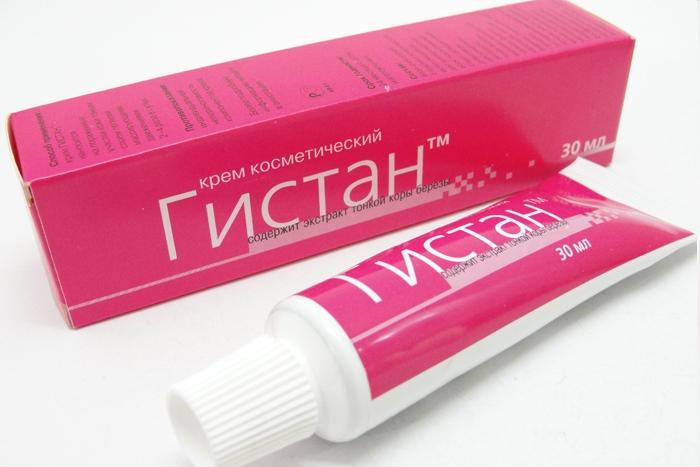
Gistan is a domestically produced antiallergic hormonal drug
Antiallergic hormonal drug of domestic production. Available in the form of capsules and cream. For red spots with itching, Gistan is most often prescribed in liquid form. A thin layer of the medicine is applied to the affected areas, avoiding the healthy epidermis, once a day. Therapy continues for 8-30 days, taking into account the severity of the allergy. Capsules are also taken daily after the main meal. The course of treatment for oral use is 20 days, after which a break is taken for 10 days and the full course of therapy is repeated again. Patients over 65 years of age may require treatment adjustments.
Attention! Hormonal medications can only be prescribed by a dermatologist or allergist. If the instructions are not followed, all allergy symptoms may increase sharply and lead to a significant deterioration in the patient’s condition.
Video - Body allergies
Signs and symptoms
Allergy spots come in different sizes and shapes:
- with Quincke's edema, large red blisters are visible on the body; as swelling increases, the formations turn white, with a red border remaining at the edges;
- with urticaria, a small rash is noticeable not only on the hands, but also on other parts of the body;
- with allergic dermatitis, red, scaly areas are visible on the cheeks, face, neck, knees, elbows;
- if you are allergic to cold on your hands, itching, red spots, irritation are noticeable on the hands and face - open areas of the body that have been in contact with cold air;
- if you are allergic to high temperature, red-pink rashes or whitish blisters are visible on the arms, neck, back, and chest. The upper body is most often affected;
- with eczema on the hands, not only areas of peeling are noticeable, but also weeping, ulcers, erosions, the surface in some parts of the palms is purplish-red, in others it is darker or lighter.
Cost of medicines
| A drug | Image | Price in Russia in rubles | Price in Belarus in rubles | Price in Ukraine in hryvnia |
| Zyrtec | 400 | 13 | 164 | |
| Telfast | 700 | 22 | 287 | |
| Allegra | 700 | 22 | 287 | |
| Fexofenadine | 300 | 10 | 123 | |
| Protopik | 700-1700 | 22-55 | 287-697 | |
| Skin Cap | 700 | 22 | 287 | |
| Zinc ointment | 700 | 22 | 287 | |
| Elokom | 100 | 3,33 | 41 | |
| Momat | 200 | 7 | 82 | |
| Gistan | 200 | 7 | 82 | |
| Fenistil | 200 | 7 | 82 | |
| Advantan | 500-1000 | 16-33,3 | 205-410 |
Attention! You can find out about existing analogues of the drug from your doctor or pharmacist. Replacing the medication prescribed to eliminate the pathology can only take place under the supervision of an allergist or dermatologist.
Traditional methods of treating allergic red spots
Celery juice
Ideally, patients are recommended to use self-grown vegetables, but store-bought vegetables are also suitable. For treatment, you should always squeeze fresh juice. It is taken 1 tbsp. spoon up to three times a day 30 minutes before the main meal. Therapy continues until symptoms disappear completely.
Washing with chamomile
This method soothes the skin well, but does not help eliminate the allergen itself. It is better to prepare a solution for the bathroom. To do this, boil two tablespoons of dry chamomile in 500 ml of boiling water. Cook the mixture for 20 minutes after boiling over low heat. After this, the grounds should be removed and the solution poured into the bathroom. Take this treatment for 20 minutes. You can wash with chamomile twice a day until the symptoms disappear completely.
Video - How to treat allergies with folk remedies
Washing with wild rosemary
Pansies and wild rosemary herb should be mixed in equal proportions. After mixing, take 4 tablespoons of the mixture and pour 1 liter of boiling water over it. After steeping the solution for 45 minutes, pour it into the bathroom. The procedure is carried out for 10 minutes daily. Therapy continues until symptoms disappear completely.
Attention! The use of folk remedies is possible only if they are well tolerated and included in combination therapy with traditional drugs.
If red spots of any size appear on the body, which itch and the itching intensifies at a certain time, you should definitely seek medical help. Sometimes such symptoms hide not only allergic reactions, but also pathologies of internal organs, including malignant ones. With timely treatment, it will be possible to quickly eliminate any dangerous disorders and quickly cure allergies.
